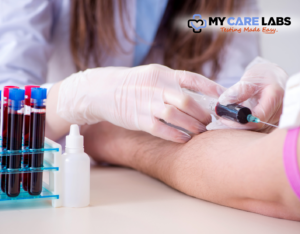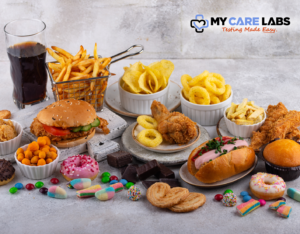In today’s fast-paced work environments, ensuring the safety and well-being of employees is paramount. One crucial aspect of maintaining workplace safety is toxicology testing. Toxicology testing involves analyzing biological samples to detect potentially harmful substances. These tests play a vital role in identifying and mitigating risks associated with exposure to toxic substances in the workplace. In this article, we will delve into the importance of toxicology testing, its various methods, and how businesses can ensure compliance with relevant regulations while safeguarding their employees’ health.
Understanding Toxicology Testing
Toxicology testing includes a range of methods used to identify substances that can threaten human health. These substances may include drugs, alcohol, heavy metals, pesticides, and industrial chemicals. In the workplace, employees may be exposed to such substances through various means, including inhalation, ingestion, or dermal contact. Toxicology testing helps assess the extent of exposure and potential health risks associated with these substances.
Types of Toxicology Tests
Drug Testing: Drug testing is perhaps the most common type of toxicology testing conducted in the workplace. It involves analyzing biological samples, such as urine, blood, or hair, to detect the presence of illicit drugs or prescription medications. Drug testing helps employers ensure a drug-free work environment and mitigate the risks associated with impaired performance or safety hazards.
Alcohol Testing: Alcohol testing is another critical component of workplace toxicology testing programs. Breathalyzer tests are commonly used to measure blood alcohol concentration (BAC) Quickly and non-invasively. Employers may also utilize blood or saliva tests to confirm alcohol consumption. Implementing alcohol testing helps prevent accidents, injuries, and productivity losses associated with alcohol impairment on the job.
Heavy Metal Testing: Certain industries, such as manufacturing, mining, and construction, may expose workers to heavy metals like lead, mercury, and cadmium. Exposure to these metals can have severe health consequences, including neurological damage, organ failure, and cancer. Regular monitoring through blood or urine tests can help identify elevated levels of heavy metals and prevent long-term health effects among workers.
Pesticide and Chemical Testing: Workers in agricultural, industrial, or laboratory settings may encounter pesticides and various chemical substances during their daily tasks. Toxicology drug testing helps assess exposure levels and monitor potential health effects associated with these substances. It enables employers to implement control measures to minimize exposure and protect employee health.
Importance of Toxicology Testing in the Workplace
Ensuring Safety: Toxicology testing helps identify potential health hazards in the workplace, allowing employers to implement measures to mitigate risks and ensure a safe working environment for employees.
Promoting Health and Well-being: By monitoring employee exposure to harmful substances, toxicology testing contributes to safeguarding workers’ health and well-being. Early detection of exposure allows for timely intervention and medical treatment, reducing the likelihood of serious health complications.
Compliance with Regulations: Many jurisdictions have regulations mandating toxicology testing in certain industries, particularly those with high-risk exposure to hazardous substances. Adhering to these regulations helps businesses avoid legal penalties and reputational damage while demonstrating their commitment to workplace safety.
Preventing Accidents and Injuries: Substance abuse or exposure to toxic substances can impair judgment, coordination, and cognitive function, increasing the risk of accidents and injuries in the workplace. Toxicology testing helps identify individuals at risk and intervene before incidents occur, thus preventing potential harm to employees and property.
Ensuring Compliance with Regulations
Compliance with relevant regulations is essential for any workplace toxicology testing program. Businesses must familiarize themselves with applicable laws and standards governing workplace safety and toxic substance exposure. Some key considerations for ensuring compliance include:
Know the Regulations: Stay informed about federal, state, and local regulations pertaining to toxicology testing and substance exposure in the workplace. Understand the requirements for specific industries and types of substances.
Develop Comprehensive Policies: Establish clear policies and procedures for toxicology testing, including who will be tested, the frequency of testing, and the consequences of non-compliance. Ensure that these policies are communicated effectively to all employees.
Provide Training: Educate employees about the importance of toxicology testing and their rights and responsibilities regarding testing procedures. Training programs should cover topics such as confidentiality, consent, and the consequences of substance abuse.
Choose Reliable Testing Methods: Select reputable laboratories or testing facilities with expertise in toxicology testing. Ensure that testing methods are accurate, reliable, and compliant with industry standards.
Protect Employee Privacy: Respect employee privacy rights throughout the testing process. Implement strict confidentiality measures to safeguard sensitive information related to test results and medical records.
Offer Support Services: Provide resources and support services for employees struggling with substance abuse or exposure-related health issues. Offer access to counseling, treatment programs, and employee assistance programs (EAPs) to promote recovery and well-being.
Why is toxicology screening important for the Workplace?
Toxicology screening is crucial for several reasons, spanning various domains including healthcare, forensic science, environmental protection, and workplace safety. Here are some key reasons why toxicology screening is important:
Healthcare Diagnosis and Treatment:
Toxicology screening helps healthcare professionals diagnose and treat patients who may have been exposed to toxic substances. By analyzing biological samples such as blood, urine, or hair, toxicologists can identify the presence of drugs, chemicals, or poisons that may be contributing to a patient’s symptoms or illness. This information is essential for providing appropriate medical interventions and preventing further harm.
Drug Monitoring and Management:
In medical settings, toxicology screening is used to monitor patients who are taking prescription medications, particularly those with a potential for abuse or overdose. By regularly testing patients’ biological samples, healthcare providers can ensure medication adherence, detect misuse or diversion of drugs, and adjust treatment plans as needed to optimize patient safety and outcomes.
Forensic Investigations:
Toxicology screening plays a crucial role in forensic investigations, particularly in cases involving suspicious deaths, accidents, or crimes. Toxicologists analyze biological samples from deceased individuals or crime scenes to identify the presence of toxic substances that may have contributed to the circumstances surrounding the incident. This information is vital for determining cause of death, establishing criminal liability, and seeking justice for victims.
Environmental Monitoring:
Toxicology screening helps monitor environmental pollutants and assess their potential impact on human health and ecosystems. By analyzing samples of air, water, soil, and biota, environmental toxicologists can identify contaminants such as heavy metals, pesticides, and industrial chemicals. This information informs regulatory agencies, policymakers, and industries about potential risks and facilitates the development of strategies to mitigate environmental pollution and protect public health.
Workplace Safety:
In occupational settings, toxicology screening is essential for ensuring the safety and well-being of workers who may be exposed to hazardous substances. Employers use toxicology testing to monitor employees for drug and alcohol use, detect occupational exposures to toxic chemicals, and assess compliance with workplace safety regulations. By identifying potential risks and implementing preventive measures, toxicology screening helps prevent workplace accidents, injuries, and illnesses.
Public Health Surveillance:
Toxicology screening contributes to public health surveillance efforts by monitoring trends in substance abuse, chemical exposures, and emerging health threats. Epidemiologists and public health officials use toxicology data to track patterns of drug use, identify outbreaks of poisoning or contamination, and develop targeted interventions to address public health concerns. This information is invaluable for protecting communities and reducing the burden of toxic exposures on society.
How is toxicology screening done at the workplace?
Overall, toxicology screening plays a vital role in protecting human health, promoting safety, and informing decision-making across various sectors. Whether in healthcare, forensic science, environmental protection, or workplace safety, the timely and accurate analysis of toxic substances is essential for identifying risks, preventing harm, and ensuring the well-being of individuals and communities.
Toxicology screening is a comprehensive process that involves the collection, analysis, and interpretation of biological samples to detect the presence of toxic substances. This screening process utilizes various techniques and methodologies to accurately identify and quantify substances of interest. Below, we delve into the key steps involved in toxicology screening:
Sample Collection:
The first step in toxicology screening is the collection of biological samples from the individual undergoing testing. Commonly used samples include blood, urine, saliva, and hair. The choice of sample depends on several factors, including the type of substance being tested for, the window of detection required, and the individual’s preferences or circumstances.
Sample Preparation:
Once collected, the biological samples undergo preparation to extract the substances of interest for analysis. This preparation may involve centrifugation, filtration, or other methods to isolate the target analytes from interfering substances present in the sample matrix. The goal is to obtain a clean and concentrated sample suitable for analysis.
Analytical Techniques:
Toxicology screening employs a range of analytical techniques to detect and quantify toxic substances in biological samples. These techniques include:
Immunoassays: Immunoassay methods, such as enzyme-linked immunosorbent assays (ELISA) and lateral flow tests, are commonly used for rapid screening of drugs and other substances. These tests rely on the interaction between antibodies and target molecules to produce a measurable signal indicating the substance’s presence.
Chromatography: High-performance liquid chromatography (HPLC) and gas chromatography (GC) are powerful analytical techniques used in toxicology screening. These methods separate complex mixtures of substances based on their chemical properties, allowing for precise identification and quantification of individual compounds.
Mass Spectrometry: Mass spectrometry (MS) is a sensitive and selective technique used to analyze the molecular composition of substances. In toxicology screening, MS is often coupled with chromatography (e.g., LC-MS/MS) to enhance analytical capabilities and improve detection limits for a wide range of analytes.
Interpretation of Results:
Once the analytical testing is complete, the obtained data are analyzed and interpreted by trained toxicologists or laboratory professionals. The interpretation of results involves comparing the detected concentrations of substances against established cutoff levels or reference ranges to determine whether they are present at levels indicative of exposure or intoxication.
Reporting and Communication:
The final step in toxicology screening is the reporting of results to the requesting healthcare provider, employer, law enforcement agency, or other relevant parties. Clear and concise reporting is essential to ensure that stakeholders understand the implications of the findings and can take appropriate action based on the results. Effective communication between laboratory personnel and end-users is crucial to facilitate informed decision-making and ensure the optimal use of toxicology screening results.
The Role of Toxicology in Industry
Toxicology plays a crucial role in various industries by helping to identify, assess, and mitigate risks associated with exposure to hazardous substances. From manufacturing to agriculture, pharmaceuticals to cosmetics, toxicology informs decision-making processes and ensures the safety of workers, consumers, and the environment. Below are key aspects highlighting the role of toxicology in industry:
1. Occupational Safety:
In industrial settings, workers may encounter a wide range of chemical substances that could pose health risks if not effectively managed. Toxicology helps assess the potential hazards associated with exposure to these substances and determines safe exposure limits. By conducting risk assessments and implementing control measures based on toxicological data, employers can protect the health and safety of their workforce.
2. Product Development and Safety:
Before introducing new products to the market, industries such as pharmaceuticals, cosmetics, and consumer goods conduct rigorous toxicological evaluations to ensure product safety. Toxicologists assess the potential risks posed by ingredients or formulations and recommend appropriate safety measures. These evaluations are essential for regulatory compliance and maintaining consumer trust in the safety and efficacy of products.
3. Environmental Protection:
Industries have a responsibility to minimize their impact on the environment and prevent pollution of air, water, and soil. Toxicology plays a vital role in assessing the environmental risks associated with chemical releases, waste disposal practices, and industrial processes. By conducting environmental risk assessments and implementing pollution prevention strategies, industries can minimize their environmental footprint and ensure compliance with regulations.
4. Hazardous Waste Management:
Industries generate several types of hazardous waste during manufacturing and production processes. Toxicology helps characterize the toxicity of waste streams and determines appropriate disposal methods to prevent environmental contamination and human exposure. By applying toxicological principles to waste management practices, industries can minimize the risks associated with handling and disposing of hazardous materials.
5. Regulatory Compliance:
Governments and regulatory agencies around the world establish standards and regulations to protect public health and the environment from chemical hazards. Toxicological data are essential for assessing the safety of chemicals, setting exposure limits, and developing regulatory guidelines. Industries rely on toxicology studies to demonstrate compliance with regulatory requirements and obtain approval for their products and operations.
6. Emergency Response and Disaster Management:
In the event of chemical spills, industrial accidents, or environmental disasters, toxicologists play a critical role in assessing the potential health risks and developing response strategies. By conducting risk assessments, providing guidance on protective measures, and assisting with decontamination efforts, toxicologists help mitigate the impact of emergencies and protect public health and safety.






